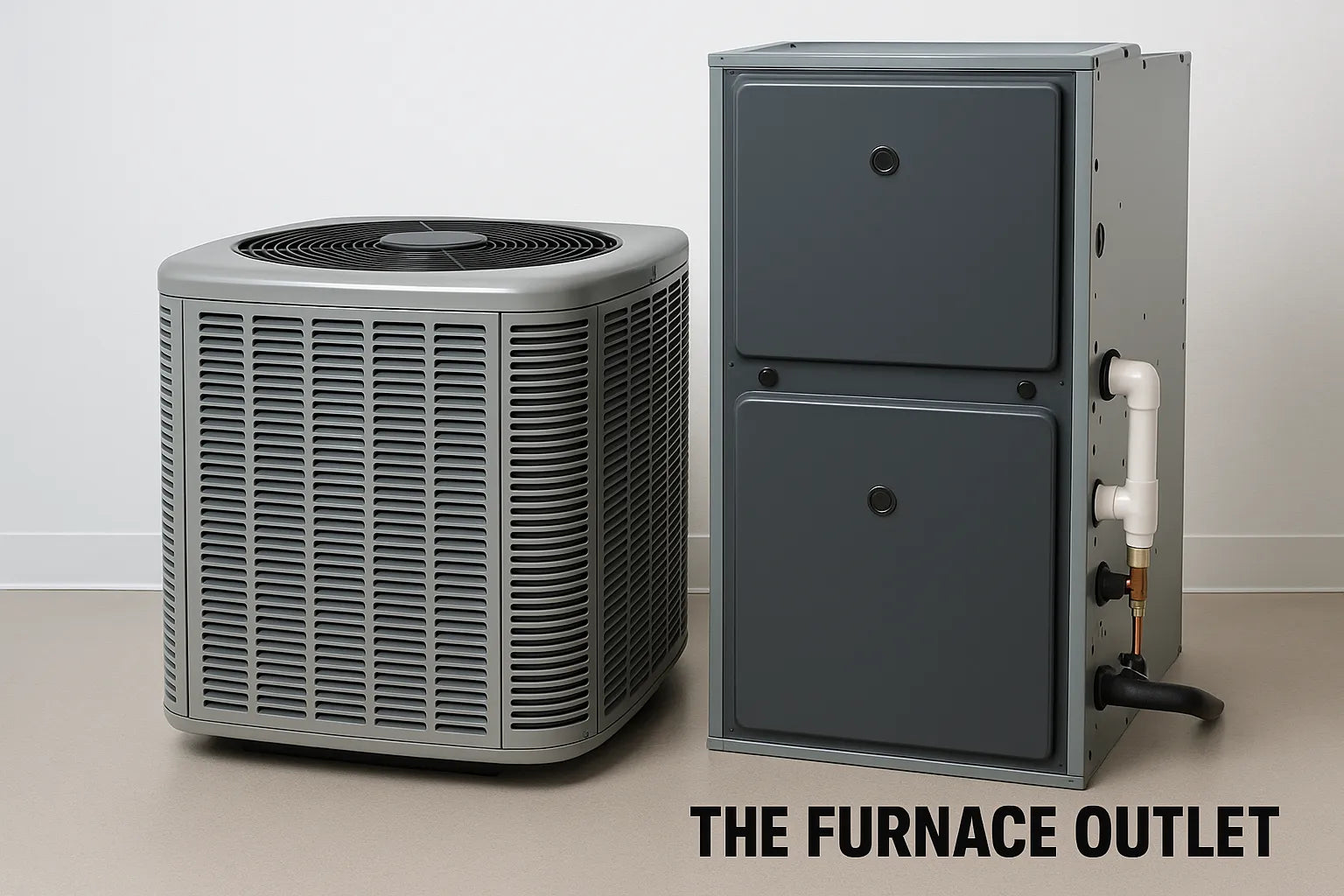Key Takeaways
-
Always match AC size to your home’s actual BTU needs.
-
The "20 BTU per sq ft" rule is just a rough guide.
-
Manual J sizing gives the most accurate results.
-
Too big or too small units cause comfort and efficiency issues.
-
Free tools help, but a pro audit gives the best results.
Why Right‑Sized AC Matters
Picture a summer afternoon when the thermometer climbs past 95°F, but your living room still feels muggy. That sticky feeling often traces back to an AC that’s the wrong size. Air‑conditioner “sizing” means matching cooling power—measured in British Thermal Units (BTUs) or “tons”—to the exact heat your house gains. Too small and it runs non‑stop; too big and it flips on and off, wasting electricity while ignoring humidity. By the end of this guide, you’ll know the math, the pitfalls, and the expert tricks (like Manual J) that keep U.S. homes comfy without draining wallets.
Sizing up your next system? Browse R32 condenser units
What “Tons” and BTUs Really Mean
One ton of cooling equals 12,000 BTUs per hour—about the heat needed to melt a ton of ice in 24 hours. Most American homes land between 1.5 tons (18,000 BTUs) and 3 tons (36,000 BTUs). The goal is simple: select a unit that can remove the same amount of heat your house absorbs.
For challenging layouts or hot zones, explore regional packaged AC systems
Quick Math: The 20 BTU‑Per‑Square‑Foot Rule
Grab a tape measure, jot down the length and width of every room, and calculate the total square footage. Multiply the sum by 20 BTUs—a handy rule that gets you within shouting distance of Reality. Example:
2,000 sq ft × 20 BTU = 40,000 BTUs ≈ 3.3 tons.
Use this baseline in conjunction with an online tool like our free HVAC Sizing Calculator Guide to refine the number before you shop.
Beyond Floor Area: Six Hidden Factors That Change the Load
Even in houses of identical size, cooling needs swing widely because of:
-
Insulation quality (old fiberglass vs. modern spray foam)
-
Window count, size, and direction (south‑facing glass bakes rooms)
-
Ceiling height (a vaulted family room holds extra hot air)
-
Regional climate (Phoenix ≠ Portland)
-
People and appliances (gaming PCs dump surprising heat)
-
Duct layout and leaks (attic ducts add 15 % load on a 95°F day)
Accounting for these variables moves you from “good guess” to bull’s‑eye comfort.
Refine your estimate online. Use our HVAC sizing calculator
Manual J: The Pro’s Blueprint for Perfect Sizing
Manual J is the software‑driven load calculation adopted by the Air Conditioning Contractors of America. It crunches 30 + inputs—orientation, U‑factor of every window, even local design temperatures—to spit out room‑by‑room BTU loads. Our article, “AC Sizing Guide & Climate Zone Map,” explains how climate zones directly inform the Manual J tables. DIY calculators approximate, but a licensed HVAC tech armed with ACCA‑approved software nails it to the decimal.
Danger of Oversizing: Short Cycling and Money Drain
Bigger isn’t better. An oversized system cools the air so fast it shuts off before extracting moisture. That leaves rooms cool yet clammy, driving you to lower the thermostat and burn even more kilowatts. Studies cited in our “Sizing Your HVAC System Right the First Time” post show that oversizing can increase annual cooling costs by 30% and double compressor wear
Undersizing Problems: Endless Run Time and Hot Spots
Undersized units face a marathon they can’t finish. They run nonstop, still fail to hit set‑point, and struggle most in the rooms farthest from the air handler. Constant operation inflates bills and accelerates evaporator-coil icing—a repair that can cost hundreds of dollars. If your thermostat never rests on the hottest afternoons, your unit’s tonnage may be shy of the mark.
Starting your own load check? Download our Manual J template
Do‑It‑Yourself vs. Hiring an HVAC Pro
Online calculators and our downloadable “Manual J Template” walk handy homeowners through data collection. That’s perfect for budget checkups or sanity checks on a contractor’s bid. Still, pros bring blower‑door tests, infrared cameras, and load‑calculation software that DIY tools can’t match. Many utilities even offer discounted audits—worth calling before you make a purchase.
Your Action Plan: Step‑by‑Step Checklist Before You Buy
-
Measure every conditioned room (including length, width, and ceiling height).
-
Apply the 20 BTU rule for a quick baseline.
-
Adjust for windows, insulation, and climate zone.
-
Run a Manual J calculation
-
Verify duct condition and airflow; seal leaks first.
-
Compare equipment specs; match SEER2 ratings to local rebates.
-
Get at least two licensed bids and ask, “Do you use Manual J?”
-
Select a unit within ±10% of your calculated load for optimal humidity control.
-
Schedule a post‑install airflow test to confirm real‑world performance.
Ready to compare equipment? Browse SEER2-rated AC systems
Frequently Asked Questions (FAQ)
Q1. Why can’t I just buy the biggest AC I can afford?
Because oversizing causes short cycling, high humidity, and higher electricity bills.
Q2. Does ceiling height really change AC size?
Yes. More vertical air volume means more BTUs are needed to pull heat out.
Q3. How often should I redo a Manual J?
Whenever you add insulation, replace windows, renovate, or every 10 years—whichever comes first.
Q4. Are heat pumps sized the same way?
Essentially yes—Manual J covers both heating and cooling loads.
Q5. Can I rely solely on an online calculator?
For a ballpark yes, but always confirm with a pro before spending thousands on equipment.







